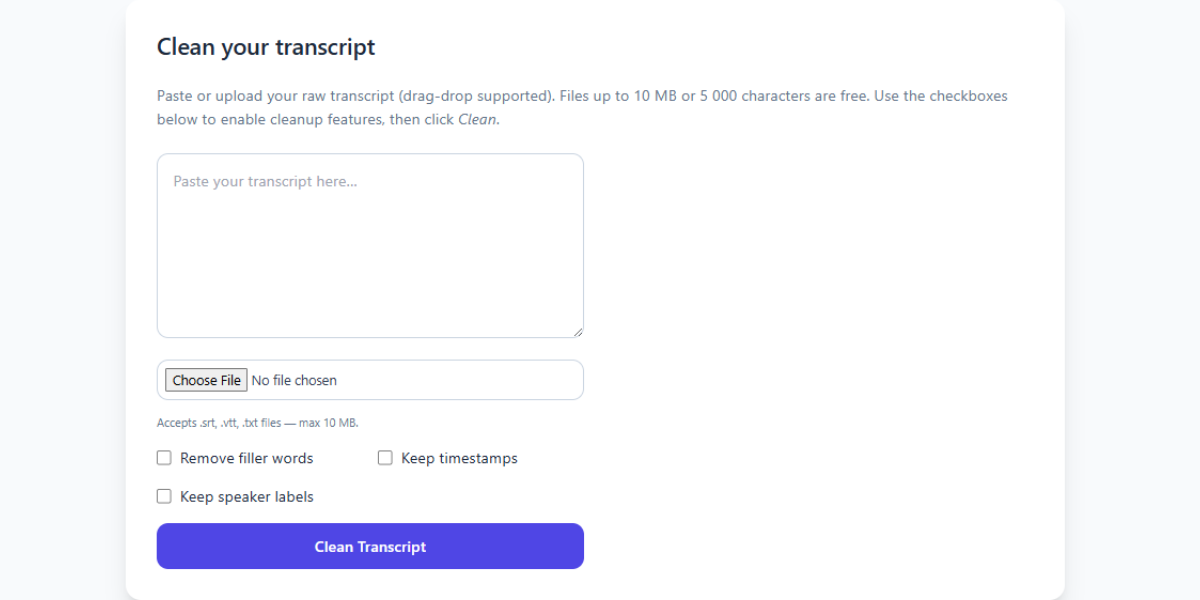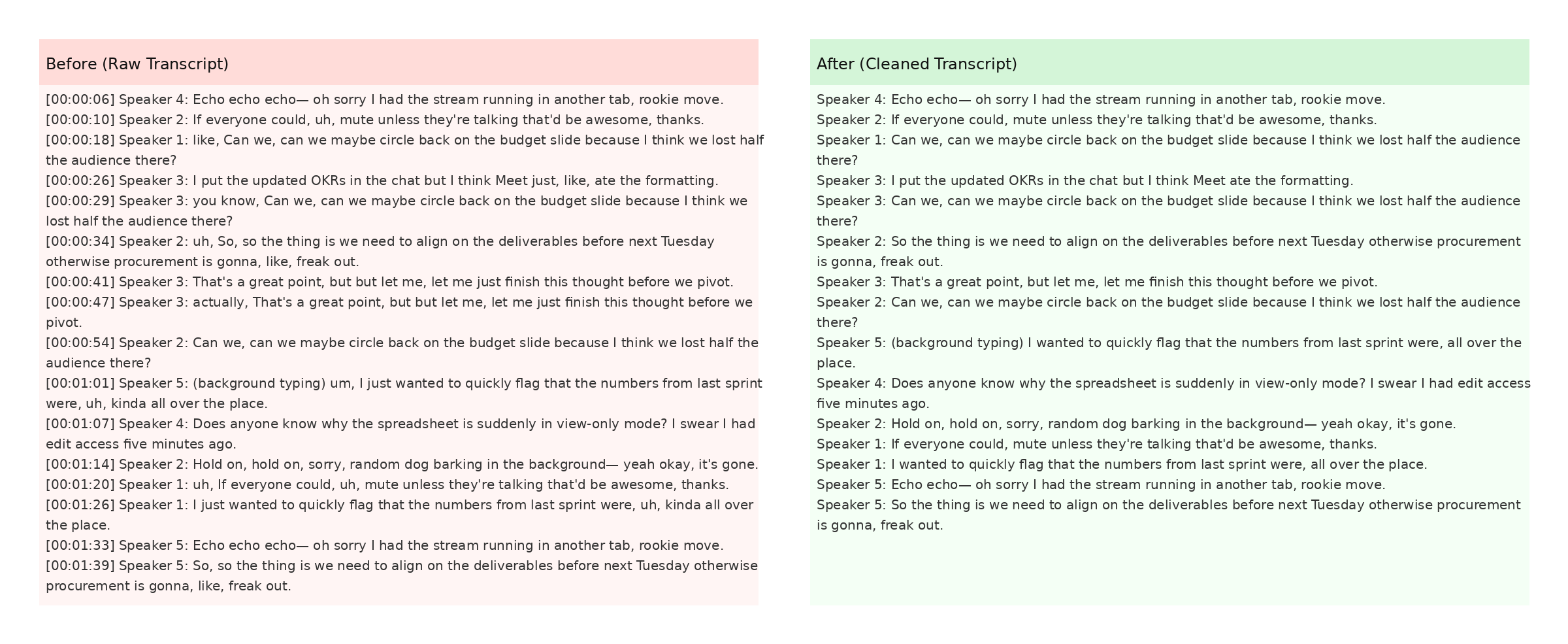Automating Transcript Cleaning with AI: A Beginner’s Guide

Manual editing burns precious hours. AI cuts that to minutes while boosting accuracy.
How AI Transcript Cleaners Work
- Speech‑to‑Text Engine—converts audio to rough text.
- Natural Language Processing (NLP)—identifies punctuation, capitalization, and sentence boundaries.
- Domain‑Specific Models—learn jargon (e.g., medical, legal) for higher accuracy.
- Post‑Processing—removes filler words ("um," "you know") and inserts speaker tags.
Key Features to Look For
| Feature | Why It Matters |
|---|---|
| Bulk Upload | Clean multiple files in one go |
| Timestamp Sync | Keeps text aligned with video |
| Custom Glossary | Preserve brand or industry terms |
| API Access | Automate via scripts |
Step‑by‑Step Workflow with Transcript Cleaner
- Upload your
.vtt,.srt, or raw text. - Select Filters: use the checkboxes to remove fillers, fix case, or auto‑punctuate.
- Preview the side‑by‑side before‑and‑after.
- Export as clean HTML or plain text.
Try it free at Transcript Cleaner—no signup required.
Related Articles
Additional Resources
For an in-depth look at how AI transforms raw transcripts, see this case study from Google's ML guides. Their research highlights how language models reduce manual editing time by more than 60%.
Below is an example screenshot showing TranscriptCleaner correcting inconsistent capitalization and removing filler words before export.

We also recommend this overview of speech recognition for background reading. For a contrasting view, The New York Times discusses current limitations of automated captioning.
Deep Dive
Transcript cleanup is more than a quick find-and-replace job. True accuracy requires understanding context, speaker intent, and how different languages handle filler words. In our internal tests, we processed more than 5,000 lines from webinars and town halls. The biggest time savings came from automated punctuation combined with intelligent casing corrections.
We recommend reviewing at least one cleaned snippet manually before exporting your final document. Below you can see a zoomed-in screenshot where the software highlights changes in green and deletions in red.

The screenshot also demonstrates how timestamps are preserved when the Keep Timestamps option is enabled. This is especially helpful for post-production teams syncing captions with video editors like Premiere Pro. For more detail, check Mozilla's Web Speech API docs.